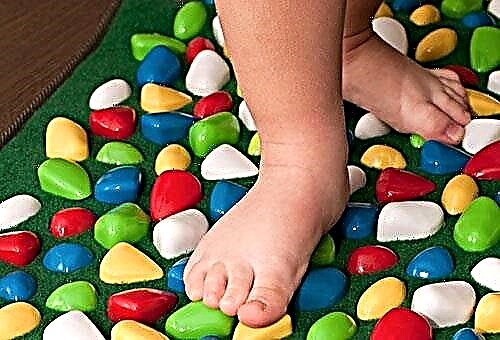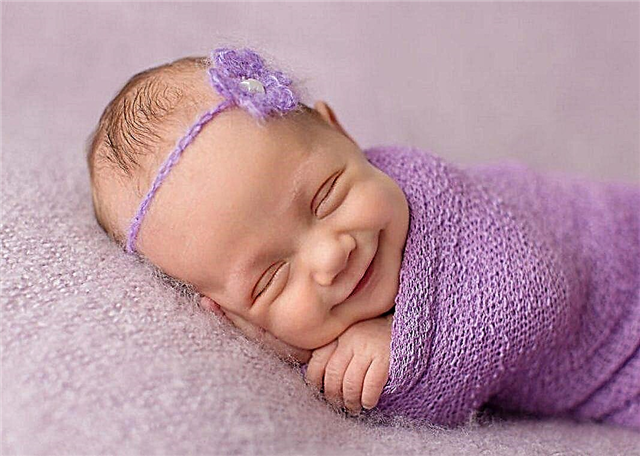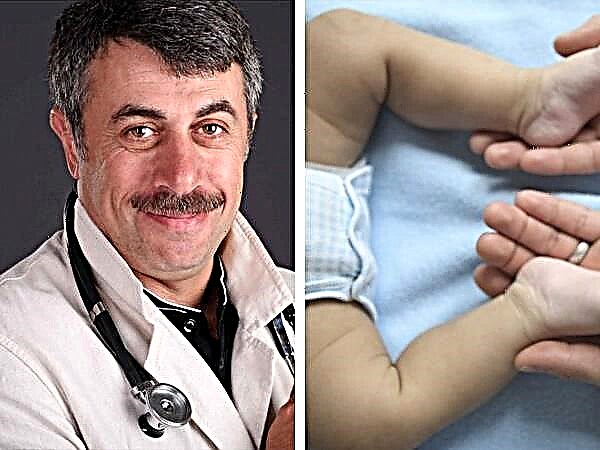
Breathing is an important component of the life support system. It makes gas exchange possible. The body is saturated with oxygen and releases the carbon dioxide into the environment. Any violation of this process is mortally dangerous for the life of a child and an adult, since changes in the composition of the blood at the cellular level are rapid and sometimes irreversible. Respiratory failure is a serious condition that is very dangerous for a child.

What it is?
Respiratory failure in medicine is a condition of impaired gas exchange, in which the balance between oxygen and carbon dioxide is disturbed. The child's condition can be maintained relatively stable, but due to the incredible efforts of the body, compensatory mechanisms, in which internal organs are overstrained and quickly fail. The first with respiratory failure always begin to suffer heart and brain.
A life-threatening condition is considered a condition in which the oxygen pressure in the blood in the arteries drops below 60 millimeters of mercury, and the amount of carbon dioxide rises to more than 45 millimeters of mercury.

Causes of occurrence
Respiratory failure can develop in newborns if their respiratory system is not ready for independent full functioning, this usually happens during premature birth.
During the third trimester of pregnancy, in the lung tissue of the fetus, the alveoli produce a special protein substance - surfactant. It is necessary for the full opening of the lungs after changing the habitat, that is, after childbirth. If there is not enough surfactant at the time of delivery, a distress syndrome develops, in which the child has respiratory failure.

In children, a state of impaired gas exchange can develop against the background of a variety of acute and chronic ailments, against the background of trauma and tumors located in the respiratory organs, with impaired functioning of the respiratory muscles, heart, in any conditions in which the mobility of the chest is significantly limited. The most common reasons are.
- Obstructions - at the same time, the passage of air through the trachea and bronchi is mechanically hampered. Conditions develop with bronchospasm, severe forms of bronchitis, when a foreign object gets into the trachea or bronchi, which the child could inhale through negligence and ignorance, compression of the trachea or bronchi with a tumor.
- Restriction - restrictive breathing disorders are expressed in limiting the ability of the lung tissue to move. It cannot expand normally, subside and expand again. This often develops not only in newborns due to tissue immaturity, but also in large children due to pneumothorax, with pneumonia with the formation of adhesions in the pleural space, if it is impossible to expand the chest due to the fact that the rib frame does not allow free movement, this happens with kyphoscoliosis.
- Hemodynamic abnormalities - Respiratory failure develops due to circulatory disorders, for example, with pulmonary embolism, when ventilation of a part of the lung becomes, in principle, impossible due to an obstruction in the air in the form of a blood clot. Some forms of heart defects in children are also accompanied by hemodynamic respiratory failure, for example, the presence of an oval window in a defect, when venous and arterial blood is mixed.

In any case, the cause should be established by specialists as soon as possible, because any form of respiratory failure is fraught with death.
Classification and types
Respiratory failure is described according to a variety of different criteria.
By type of origin
There is hypoxemic insufficiency or type 1 DN. It is she who is more common in premature babies. With such a deficiency, the oxygen pressure in the blood is low, the condition is severe and it is difficult to treat with oxygen. This form usually occurs with pneumonia, pulmonary edema with heart defects. Also, pumping failure or DN of the second type is distinguished.
With it, a violation is expressed by increased indicators of carbon dioxide pressure in the blood. The condition responds more easily to oxygen therapy. It usually appears when the functions of the respiratory muscles, ribs, and the respiratory center of the brain are impaired.

For reasons
Above, we have already considered the main reasons, in connection with which doctors distinguish obstructive DN, restrictive, combined, hemodynamic and diffuse.
By symptoms
Much depends on how quickly respiratory failure develops. The most dangerous is uncompensated, acute insufficiency. It arises rapidly, with lightning speed. You can't do without the help of resuscitators... Chronic insufficiency can be present for months, years. It is gradually compensated by the body, but during periods of exacerbation it can turn into an acute one, and then again everything will depend on the skill of resuscitators.

By severity
First degree - the presence of shortness of breath during exertion. Sometimes only with significant, sometimes - and with ordinary. Second degree - this is the appearance of shortness of breath, even with a slight load, when performing simple actions. Third degree - shortness of breath is present even at rest, when the child is not doing anything that could cause an increased demand for oxygen. The skin is often bluish, and cyanosis is observed in the nose and lips, as well as under the eyes.

Symptoms and signs
How respiratory failure manifests itself depends on the reason for it, and on its type and mechanism, and on the severity. In general, a decrease in oxygen pressure in the arteries causes a slight bluish tint to the skin (cyanosis), and the higher the severity, the more pronounced this cyanosis. The child has a rapid heartbeat, blood pressure can be moderately lowered. The baby's attention, memory decreases, there may be fainting, loss of consciousness.
With an increase in carbon dioxide pressure, the heartbeat increases, sleep is disturbed (babies and older children may have no sleep at all at night, while during the day the baby will be drowsy and lethargic). Nausea and severe headaches appear. If the amount of carbon dioxide builds up too quickly, the development of coma and cerebral edema is possible.
If the respiratory muscles function incorrectly or not to the required degree, then breathing becomes more frequent, the help of other muscles to their weakened "colleagues" is noticeable - the muscles of the neck and abdomen begin to participate in the breathing process. If the respiratory rate becomes more rare, less than 12 breaths per minute, then this may be an alarming symptom of an imminent respiratory arrest.


With almost all types of respiratory failure, shortness of breath develops, and edema may appear. Respiratory failure in itself is considered a dangerous condition, and if the child does not receive the help and treatment he needs in time, it can cause his death.
If the failure is long, chronic, then heart failure and cerebral ischemia may develop as a complication.
Diagnostics and treatment
If you notice shortness of breath in a child that is not associated with running, jumping, be sure to visit a doctor. The prognosis depends on timely diagnosis. The doctor evaluates the flowers of the skin, considers with what frequency the baby breathes, whether other muscles are involved in the respiratory movements, which, by origin, are not supposed to.
To assess the quality of breathing, special functional tests... These include spirometry, peak flowmetry. The volume of the lungs is measured, the speed of air flow through the trachea, bronchi. Definitely needed blood gas analysis... It allows you to assess the saturation of arterial blood with oxygen or carbon dioxide, and it is this indicator that is considered the main one in establishing a diagnosis. It is also considered important X-ray of the lungs.
For treatment, a variety of approaches can be used, provided by clinical guidelines for the corresponding diagnosis.
First of all, it is important for the child to ensure normal breathing, and for this they can use an oxygen mask, a ventilator. Simultaneously with the maintenance of the respiratory system from the outside, treatment of the underlying disease begins, which led to the development of respiratory failure.
It is important to maintain the normal state of the bronchi, therefore, in treatment, great importance is attached to their drainage ability.... Antibiotics, mucolytic drugs, chest and back massage, exercise therapy can be used. What are the forecasts, it is difficult to say unequivocally, because respiratory failure itself can be a complication of a variety of diseases. DN is too often fatal (among other complications), and therefore doctors try not to make predictions.
It should be noted that about one third of children with obstructive chronic diseases develop respiratory failure of one degree or another. But it is considered more dangerous respiratory failure in children with neuromuscular ailmentsthat are progressing. If you do not support their respiratory system, then death can occur within a year.
Experts believe that respiratory failure will shorten life expectancy. Therefore, it is precisely the prevention of this formidable and dangerous complication that it is recommended to pay close attention to.


The features of prevention are to properly treat respiratory ailments, not trying to help the child with folk remedies, but referring to a doctor. This will help prevent the formation of obstructive chronic disease. During pregnancy, prevention should be aimed at preventing premature birth, at the formation of fetal heart defects. In any case, if any signs of a lack of oxygen, shortness of breath appear, it is important to see a doctor as soon as possible.
If the child suddenly begins to turn blue, cannot make a full inhalation or exhalation, or breathe frequently but cannot breathe, urgent help is needed. At home, parents have limited options. It is necessary to call an ambulance, unbutton the child's clothes that can hinder the movement of the chest, tight collars, belts.
It is important to ensure the flow of fresh air - open the windows and do not give the child any medication until the doctors arrive. If there is no breathing, artificial respiration should be given.




